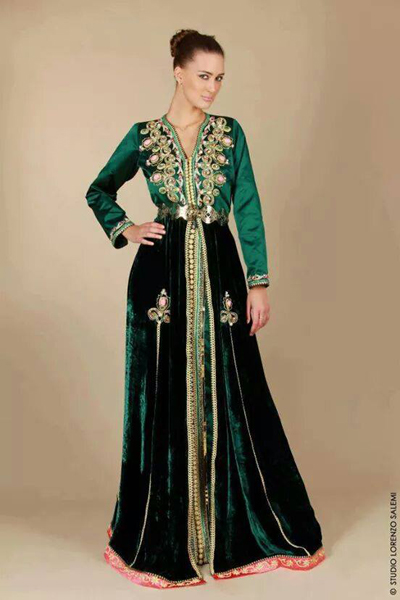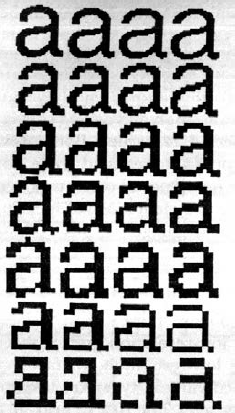[ The Semantics of Line Drawings XIV, Grylloi and Visual Linguistics | The Semantics of Line Drawings XVI, Cummerbund, not Cumberland ]
Man is the animal who is not satisfied with merely living his life, but who is capable of — and insists upon — watching himself doing it. He not only is, acts, feels, and knows; but unlike any other animal. he is insatiably curious to observe his body, his actions, his feelings, and his thoughts.
When he does this, however, he is seldom wholly satisfied with what he finds. Nature, he discovers, has been both niggardly and clumsy in the appearance it bestowed upon him, and likewise in the talents, virtues, and powers with which it equipped him. Therefore, no sooner does he get a good look at himself than he takes steps to effect, as best he can, changes for the better.
In Vernor Vinge's short story "Apartness", the Northern Hemisphere has been rendered uninhabitable by a terrible war, nuclear, chemical and biological. Two hundred years later, a scientific exploration fleet from South America sails to Antarctica and finds an isolated tribe who call their land New Transvaal. Much less adapted to the cold, both biologically and technologically, than our Inuit, they turn out to be the descendants of the last white men on Earth: South Africans who escaped from their country after a genocide against all white Africans. When the scientists land, the leader of the tribe greets them. They are surprised by his clothing. Most of the tribe are wearing crude sealskin parkas, but his is particularly impractical, and in fact resembles a double-breasted jacket more than anything designed to keep its wearer warm.
But although jackets are not a terribly practical form of clothing, leaving so much space for heat to escape, people still wear them. Why? Vinge's tribal president wore his as a symbol, but we don't all hold such positions of power. In my last post, I wrote about Mark Changizi's call for a discipline that studies the visual "utterances" people make — writing, visual signs, fashion, architecture, and the other visual aspects of culture — and relates them to the visual system and its evolution. While drawing a cartoon, I was looking up the kinds of suit bankers wear, and I came across Antonio Centeno's Real Men Real Style and his article "The Difference a Jacket Makes". He starts by writing:
Imagine a product that will adds inches to your perceived height, shaves 20 lbs of your midsection, and makes you appear more muscular. And the magic item can do all this instantly!
Centeno says that jackets improve their wearer's appearance in three ways: by bulking out the shoulders; by slimming the waist; and by drawing attention to the face and making the wearer seem taller.
The first of these benefits, the bulking effect, is obvious. The second, the apparent slimming, happens because jackets taper a bit above the waist, and widen above the taper, an effect accentuated by their outward-spreading lapels. And they flare out over the stomach and hips, hiding weight you may be carrying under the flare. So the middle of the jacket is narrowed, which "makes you look like our image of a healthy man: tucked at the waist, widening above it". As Centeno continues: "Think of it as a tummy tuck without the horrible, invasive surgery."
And the third benefit is also because jackets widen towards the top. This makes us naturally look from the waist up rather than the face down, making us think we're looking up at something even when we're taller than the wearer. This keeps people looking at your face rather than your middle. Centeno suggests asking people to guess your height with and without a jacket: the "with" guesses will always be greater.

These effects work with the clothing of other cultures too. For example, the cross-shaped design on
Moroccan shirts and dresses. Here are two examples that have got copied to many sites on the Web. They show how the "V" formed by the top of the design draws attention to the face:


So, going back to visual linguistics, one question about these visual "utterances" is: why are they so popular, and what has this to do with the way they enhance the wearer's perceived fitness?















 FIGURE 24-7.
A metaphor for translation. A stream (symbolizing reality) has two
sets of stepping-stones (symbolizing the basic ingredients of a language, such as
words and stock phrases) in it. The black stones (Burmese, say) are arranged in one
way, and the white stones (say, Welsh) in some other way. A pathway linking up a few
black stones (a thought expressed in Burmese) is to be imitated by a "similar"
pathway joining up white stones (translated into Welsh). One possibility is the
speckled pathway, located at nearly the same part of the stream as the original
pathway but not terribly similar in shape to it (a fairly literal translation), while a
rival candidate (a more literary translation, needless to say) is the pathway located a
distance upstream and resembling the original in some more abstract ways, including
patterns in some of the "overstones" of the main stones (the similar archipelagos in
Burmese and Welsh stones running roughly parallel to the far bank).
FIGURE 24-7.
A metaphor for translation. A stream (symbolizing reality) has two
sets of stepping-stones (symbolizing the basic ingredients of a language, such as
words and stock phrases) in it. The black stones (Burmese, say) are arranged in one
way, and the white stones (say, Welsh) in some other way. A pathway linking up a few
black stones (a thought expressed in Burmese) is to be imitated by a "similar"
pathway joining up white stones (translated into Welsh). One possibility is the
speckled pathway, located at nearly the same part of the stream as the original
pathway but not terribly similar in shape to it (a fairly literal translation), while a
rival candidate (a more literary translation, needless to say) is the pathway located a
distance upstream and resembling the original in some more abstract ways, including
patterns in some of the "overstones" of the main stones (the similar archipelagos in
Burmese and Welsh stones running roughly parallel to the far bank).